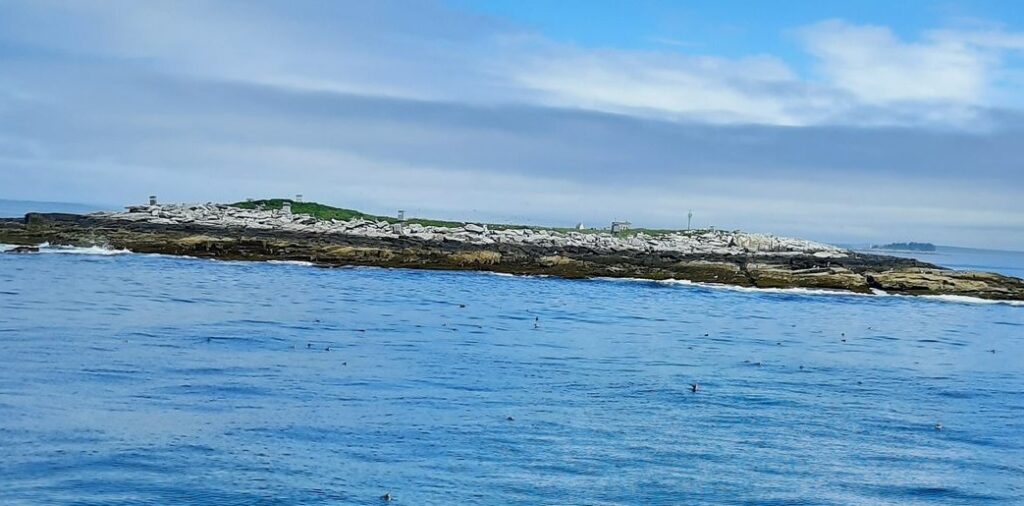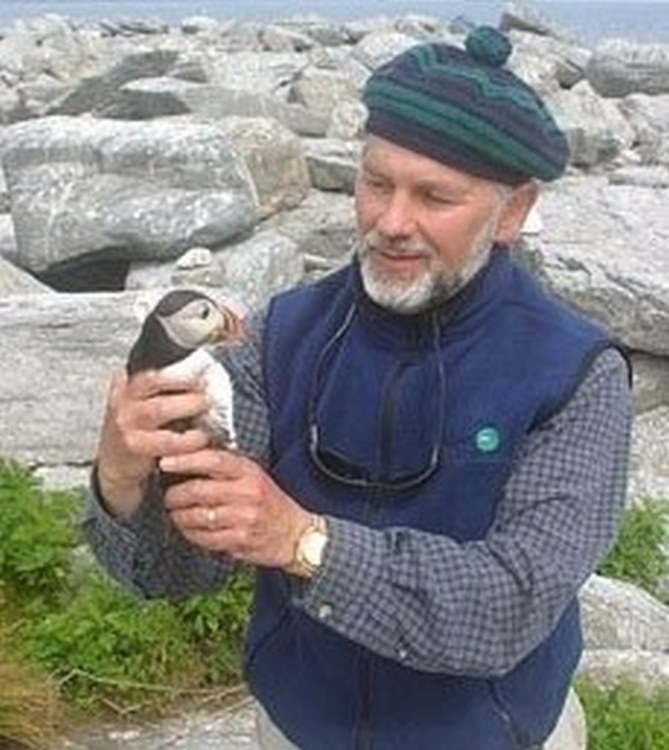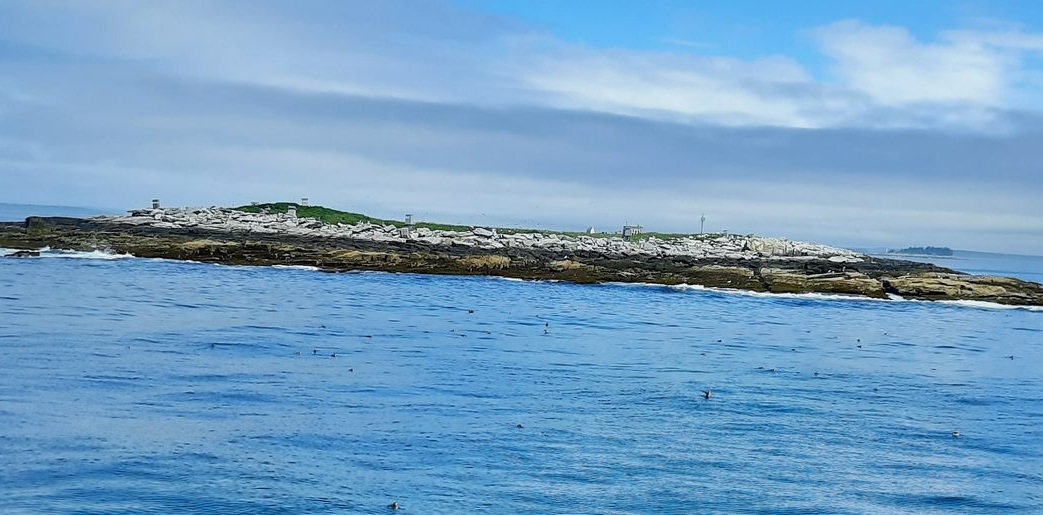 Eastern Egg Rock Island – credit CC0 Lisapaulinet
Eastern Egg Rock Island – credit CC0 Lisapaulinet
For 50 years, the state of Maine has drawn worldwide attention for its efforts to restore a puffin colony, an effort that has brought controversy, hope, and a cottage industry you have to see to believe.
Featured recently on the PBS News Hour, it’s a story that begins back in 1973 when a young ornithologist named Stephen Kress thought he could try to restore the puffin populations of the US Mid-Atlantic after overhunting eliminated them locally in the 1800s.
 Stephen Kress holding a puffin chick – credit, VOA, public domain
Stephen Kress holding a puffin chick – credit, VOA, public domain
“People caused them to leave,” the career puffin-ologist said. “Maybe people can help bring them back. That was the notion. I had no idea that that notion was going to be my life’s work.”
Indeed the young scientist suffered the slings and arrows for his trouble, but his years of work were a success.
Back then, Kress believed that if he could hand-hear puffin chicks on Eastern Egg Rock Island, the last place they were found in the US, they might return to nest there after fledging. Importing some chicks from Canada to the criticism of the general ornithological community, he worked with the Audubon Seabird Institute to start Project Puffin.
The Audubon team led by Kress built nests for the puffin chicks out of a natural material called sod, and stayed on the island for hours at a time bringing fish for them to eat. Kress and the others at Audubon also needed to find a way to bring other puffins to the colony, or at least to entice those they had reared to return.
Yet again facing criticism, they began putting out mirrors, puffin decoys, and playing the recorded sounds of puffin calls. The birds are highly social and dependent on colonial structures.
The chicks gradually grew to fledge, and in 1981, 4 years after he began Project Puffin, adult puffins were seen returning to Eastern Egg Island with fish in their mouths: a sure sign that there were chicks on the island.
Today, hundreds of puffins inhabit the colony at Eastern Egg, though not without a little help from their longtime friend. Kress has been involved in protecting the puffins every step of the way, which has included tackling new threats. It turns out convincing them to lay eggs there was just the first challenge.
With the return of the puffins came laughing gulls—something of a nemesis—which steal the food they bring to their chicks.
ALSO CHECK OUT:
Project Puffin, long since concluded, has now morphed into a new effort to battle the gulls with the help of terns—a ferociously territorial bird.
“I was hoping that the terns alone would be enough to protect the puffins,” Kress admitted. “Now we know that the terns alone aren’t enough to protect the puffins. The terns and the puffins need our help.”
MORE SEABIRD SAVIORS:
Their solution was more decoys: hundreds of them, of varied species such as those the gulls don’t want to mess with. This response prompted the Audubon team to create a robust decoy-production facility, where hundreds of birds of 48 different species are made every year, causing an international demand that has seen them used in over 800 seabird conservation efforts.
The production is overseen by Susan Schubel, the Seabird Institute’s outreach educator, who said that by using decoys they can send clues and signals to different species about where it’s safe to nest.
WATCH the story below from PBS News Hour…
SHARE These Puffin People And Their Dedicated Work To Save The Species…

